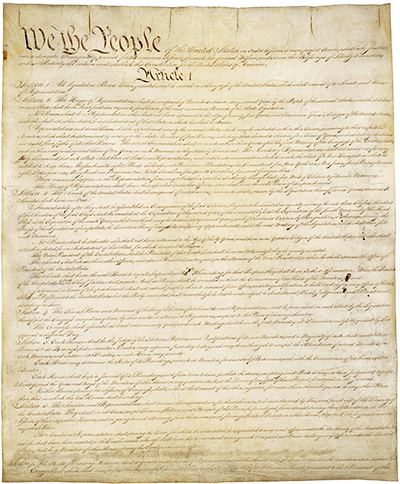Minnesota Government
Founding Documents
US Constitution 1787
In 1787, the original states, except Rhode Island, collectively appointed 70 men to the Constitutional Convention in Philadelphia. In all 55 attended, and 39 signed the Constitution. The Constitution’s framers worked to develop a document that would provide a stronger central government than the Articles of Confederation but that would also preserve tenets of independence and individual rights espoused by other fundamental documents like the Magna Carta and Declaration of Independence. The framers drew heavily upon Athenian and English political philosophy to find the right balance.
The Constitution was adopted Sept. 17, 1787, by the unanimous consent of the states present in the convention appointed pursuant to the resolution of the Congress of the confederation, of the February 21, 1787, and was ratified by the conventions of the several states, as follows: By convention of Delaware, Dec. 7, 1787; Pennsylvania, Dec. 12, 1787; New Jersey, Dec. 18, 1787; Georgia, Jan. 2, 1788; Connecticut, Jan. 9, 1788; Massachusetts, Feb. 6, 1788; Maryland, April 28, 1788; South Carolina, May 23, 1788; New Hampshire, June 21, 1788; Virginia, June 26, 1788; New York, July 26, 1788; North Carolina, Nov. 21, 1789; Rhode Island, May 29, 1790.
The first ten of the amendments, known as the Bill of Rights, were proposed at the first session of the First Congress of the United States, Sept. 25, 1789; and were finally ratified by the constitutional number of states Dec. 15, 1791. The eleventh amendment was proposed at the first session of the Third Congress, March 5, 1794, and was declared in a message from the president of the United States to both houses of Congress, dated Jan. 8, 1798, to have been adopted by the constitutional number of states. The twelfth amendment was proposed at the first session of the Eighth Congress, Dec. 12, 1803, and was adopted by the constitutional number of states in 1804, according to a public notice thereof by the secretary of state, dated Sept. 25, 1804.
